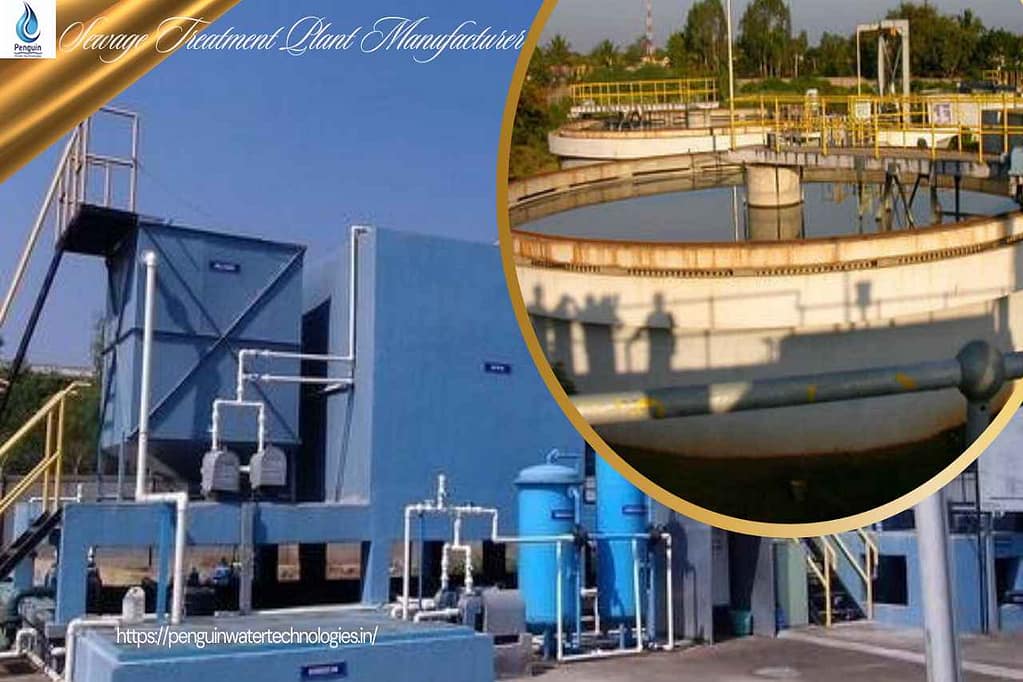Sewage Treatment Plant (STP)
- Sewage Treatment Plant (STP)
- Effluent Treatment Plant (ETP)
- Common Effluent Treatment Plant (CETP)
- Zero Liquid Discharge Plant (ZLD)
- Rain Water Harvesting System
- Industrial & Commercial RO Plant
- Water Softener
- Demineralization Plant/DM Plant-MB Plant
- Ultrafiltration Plant/UF Plant
- Nanofiltration Plant
- Organic Waste Composting Machine
- Fully Automatic Composter
- Semi Automatic Composter
- Shredder
- Bailing Press Machine
- Solid Waste Recycling Machine
- Waste to Energy

|| Related Parts and Products ||
PRODUCT 1
PRODUCT 2
PRODUCT 3
PRODUCT 4
PRODUCT 5
Design & Technologies in Sewage Water Treatment Plant
STP (Sewage Treatment Plant) treats sewages produced by numerous companies in order to enhance the quality of wastewater for reuse. Although it performs physical, chemical, & biological procedures for removing the contaminants & producing treated wastewater to make it safe for the environment.
Why Do We Need a STP Water Treatment Plant?
We need STP for cleaning & treating the sewage wastewater before it goes into a natural environment.
However, if the sewage water is released into the water bodies without cleaning or treating then it will pollute the water sources. And then after, it’ll result in killing human beings and spreading diseases. Industrial and commercial establishments are generally needed for treating the sewage based on the quality standards before letting them to the sewar.
The main purpose of installing the sewage treatment plant (STP) in the vicinity is to eliminate the harmful impurities before releasing them into the environment.
There are some treatment technologies available in the market.
Moving Bed Bio Reactor (MBBR)
It is a mainly attached growth treatment process. In this process aeration, we have special plastic carriers that provide a surface where bio film can grow. The density of pages is almost equivalent to water and made of polyethylene.
Membrane Bio Reactor (MBR)
It is mainly a combination of biological and membrane-based treatment. The membrane has a pore size of 0.03-0.04 micron, which combines micro filtration and ultra filtration. It is the advanced treatment technology for sewage treatment plants.
Sequential Batch Reactor (SBR)
It is mainly a fill and draws type treatment scheme for activated sludge systems. In this system, wastewater is added to a single batch of undesirable components and then discharged.
There are other different types of technologies available in the market. The best choice depends upon the source from which wastewater is generated, no—working hours of the plant and other parameters.
Sewage treatment plant suitable for industries:
- Battery Manufacturing
- Institutions & Hospitals
- Food Industry
- Iron and Steel Industries
- Electric Power Plants
- Paper Industry
- Petrochemical Industry
- Textile Dyeing
How Does a STP Plant Work?
A Sewage Treatment Plant works mainly in four different stages, there are as follows:
1. Preliminary Treatment
2. Primary Treatment
3. Secondary Treatment
4. Tertiary Treatment
Benefits of a Sewage Treatment Plant
- It’s one of the proven technologies that offer the reliable performance.
- Sewage Treatment Plant preserves the natural environment against the pollution and contamination.
- It requires the low maintenance.
- Mainly assists to meet the values for emission of the pollutants set via the Government & avoid penalty
- STP reduces the risk to environment and public health.
